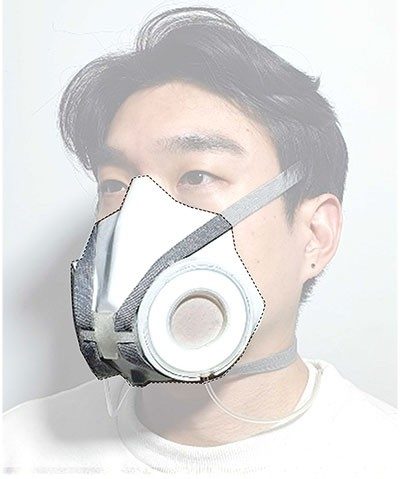FOR IMMEDIATE RELEASE
ACS News Service Weekly PressPac: September 29, 2021
AI-driven dynamic face mask adapts to exercise, pollution levels
During the coronavirus pandemic, many people have grown accustomed to wearing face masks to protect themselves and others, but that doesn’t mean the masks are always comfortable — especially during exercise. Now, researchers reporting in ACS Nano have developed a dynamic respirator that modulates its pore size in response to changing conditions, such as exercise or air pollution levels, allowing the wearer to breathe easier when the highest levels of filtration are not required.
Face masks protect against the spread of the virus that causes COVID-19, but they are also worn by people with respiratory problems to filter out harmful pollutants. However, in some circumstances, high levels of filtration aren’t needed, such as when air pollution levels are low, or when someone is exercising outdoors alone — which is generally considered a low-risk activity for spreading COVID-19. But current masks can’t adjust to changing conditions. With time, the trapped, exhaled breath can create sensations of heat, humidity, bad breath and discomfort, especially as more breath gets exhaled during exercise. Seung Hwan Ko and colleagues wanted to make a respirator that could automatically adjust its filtration characteristics in response to changing conditions.
The researchers developed a dynamic air filter with micropores that expand when the filter is stretched, allowing more air to pass through. A large increase in the breathability of the filter, which was made of electrospun nanofibers, was achieved with only about a 6% loss in filtration efficiency. The team then placed a stretcher around the filter that was connected to a lightweight, portable device containing a sensor, air pump and microcontroller chip. The device communicates wirelessly with an external computer running artificial intelligence (AI) software that reacts to particulate matter in the air, as well as changes in the wearer’s respiratory patterns during exercise. Two of the filters were placed on each side of a face mask and tested on human volunteers. The stretcher correctly generated a smaller increase in pore size when a volunteer exercised in a polluted atmosphere than when they exercised in clean air. Notably, the AI software allows the respirator to adapt to individuals’ unique respiratory characteristics, which could be used to develop a personalized face mask, the researchers say. To make the system smaller, lighter and less cumbersome, the stretcher could eventually be redesigned to have a pump-free mechanism, they add.
The authors acknowledge funding from the National Research Foundation of Korea.
###
The American Chemical Society (ACS) is a nonprofit organization chartered by the U.S. Congress. ACS’ mission is to advance the broader chemistry enterprise and its practitioners for the benefit of Earth and all its people. The Society is a global leader in promoting excellence in science education and providing access to chemistry-related information and research through its multiple research solutions, peer-reviewed journals, scientific conferences, eBooks and weekly news periodical Chemical & Engineering News. ACS journals are among the most cited, most trusted and most read within the scientific literature; however, ACS itself does not conduct chemical research. As a leader in scientific information solutions, its CAS division partners with global innovators to accelerate breakthroughs by curating, connecting and analyzing the world’s scientific knowledge. ACS’ main offices are in Washington, D.C., and Columbus, Ohio.
To automatically receive press releases from the American Chemical Society, contact newsroom@acs.org.
Note: ACS does not conduct research, but publishes and publicizes peer-reviewed scientific studies.
Media Contact
ACS Newsroom
newsroom@acs.org

View larger image

